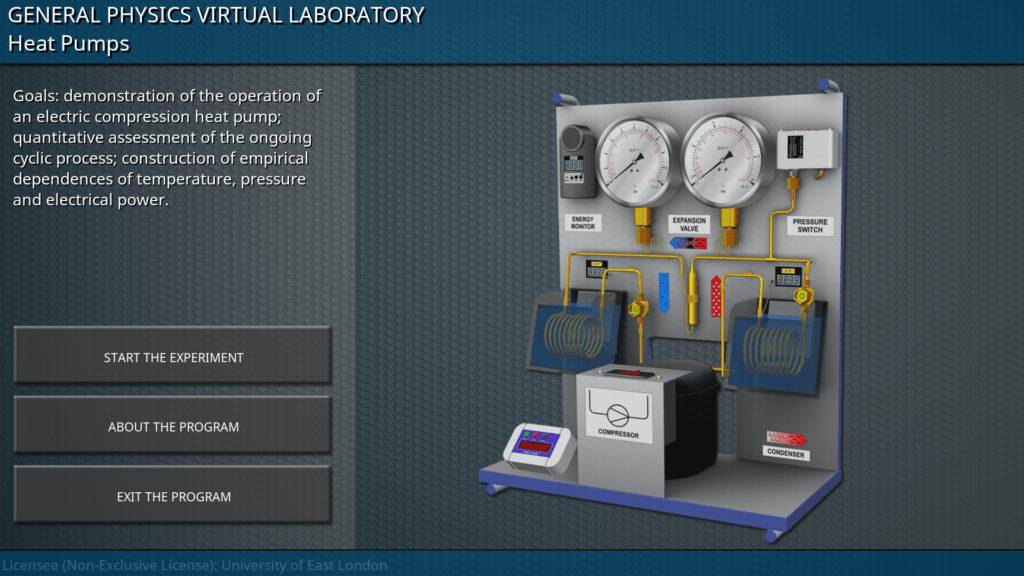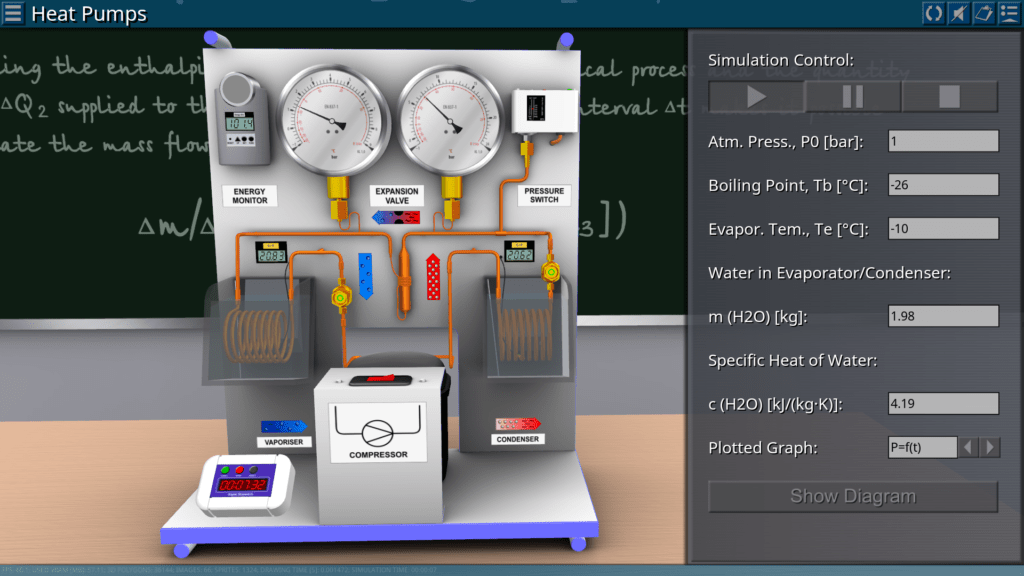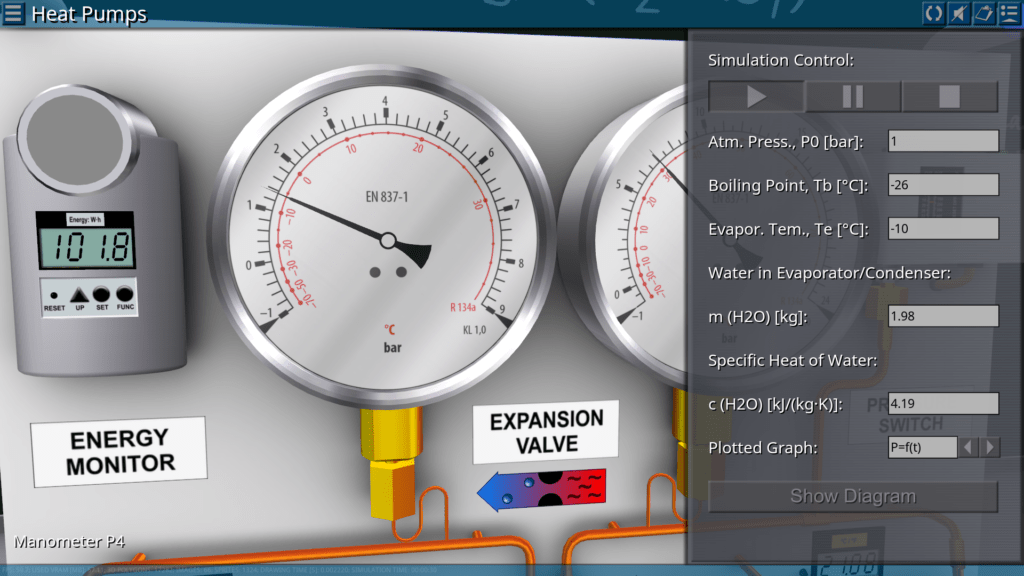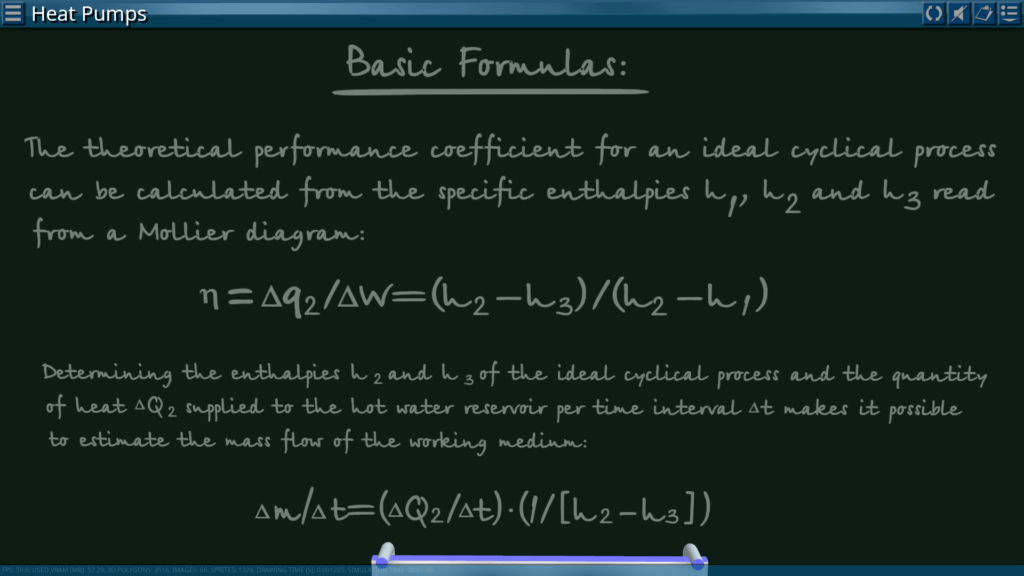The software package includes 13 virtual laboratory works from the general physics course for students of higher and secondary educational institutions:
The virtual laboratory practice is implemented in the form of a set of cross-platform graphical applications supplied for various operating systems: Microsoft Windows, Linux, MacOS, iOS, Android, as well as web applications based on HTML5 technology, which provide the ability to remotely perform laboratory work in a web browser. The graphical component of the software uses the OpenGL 2.0 programming interface and component base.
Note:for best performance of online-versions of applications, we recommend using the Microsoft Edge web browser.
Goals: measurement of body temperature depending on the number of revolutions using a friction cord; study of the proportionality between temperature change and the work of friction force; verification of the first law of thermodynamics; determination of the specific heat capacity of the material.

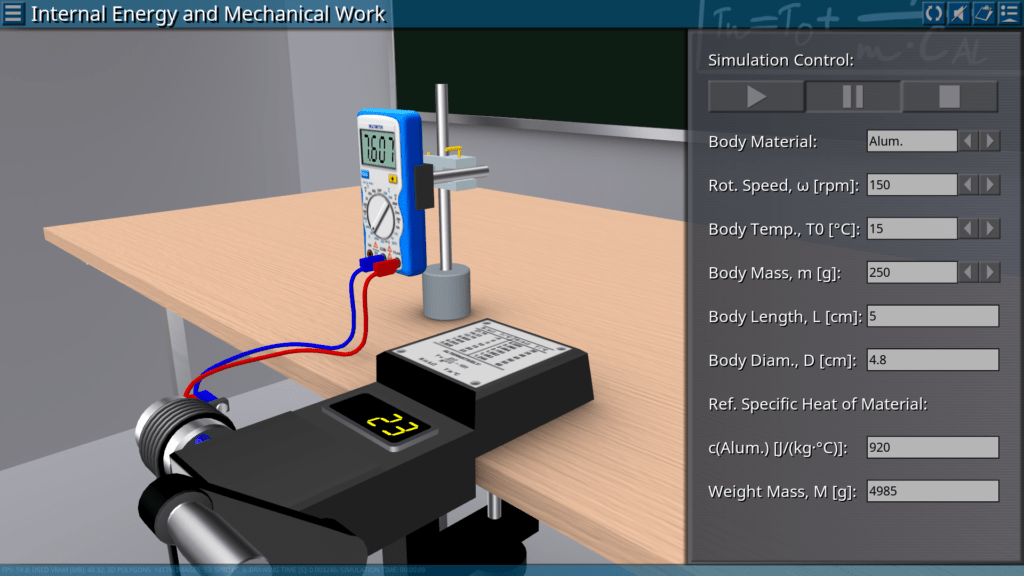
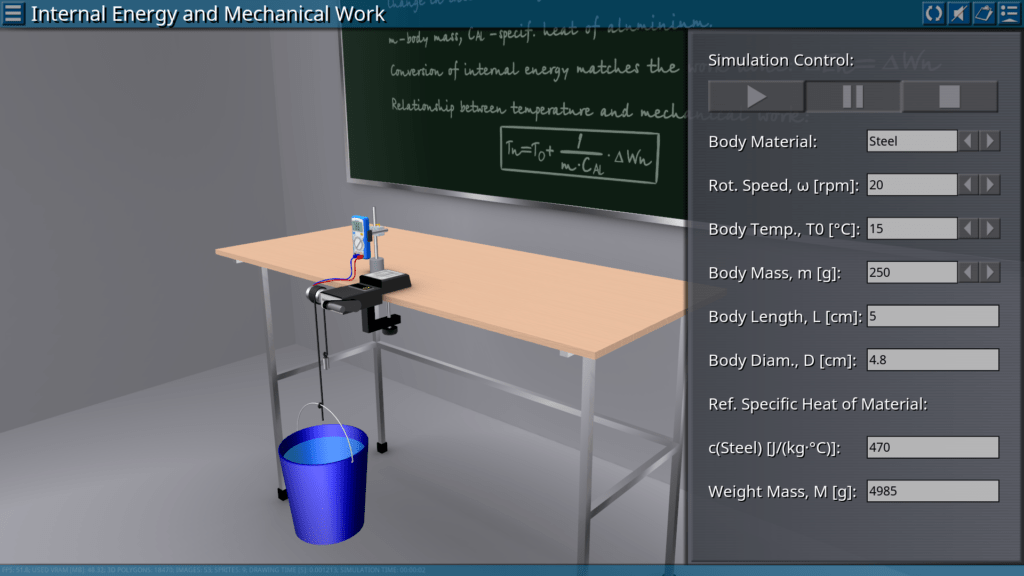


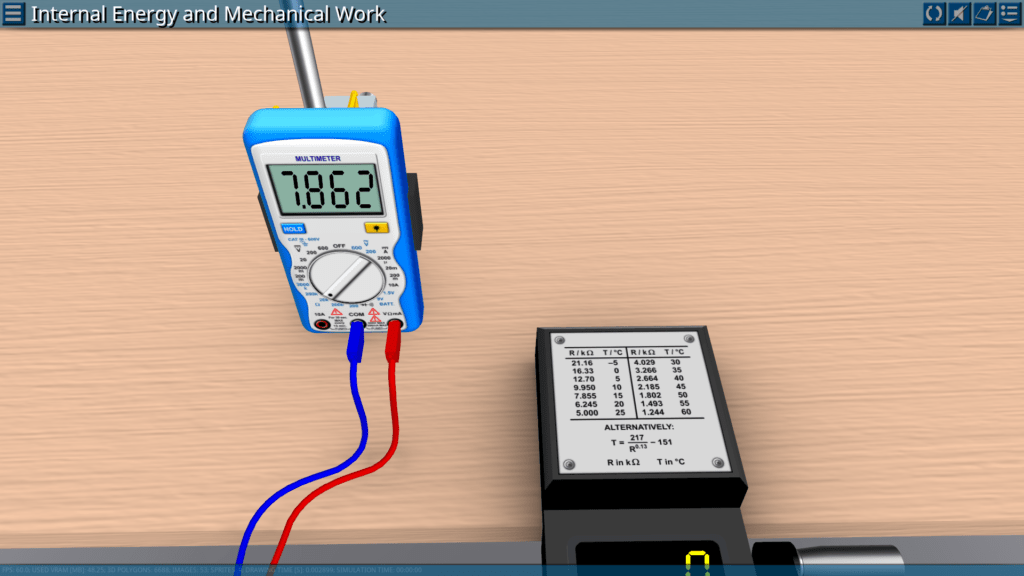
Goals: temperature measurement of aluminum and copper bodies depending on the perfect electrical work; demonstration of the proportionality of temperature changes to electrical work; verification of the first law of thermodynamics; determination of specific heat capacities of copper and aluminum.
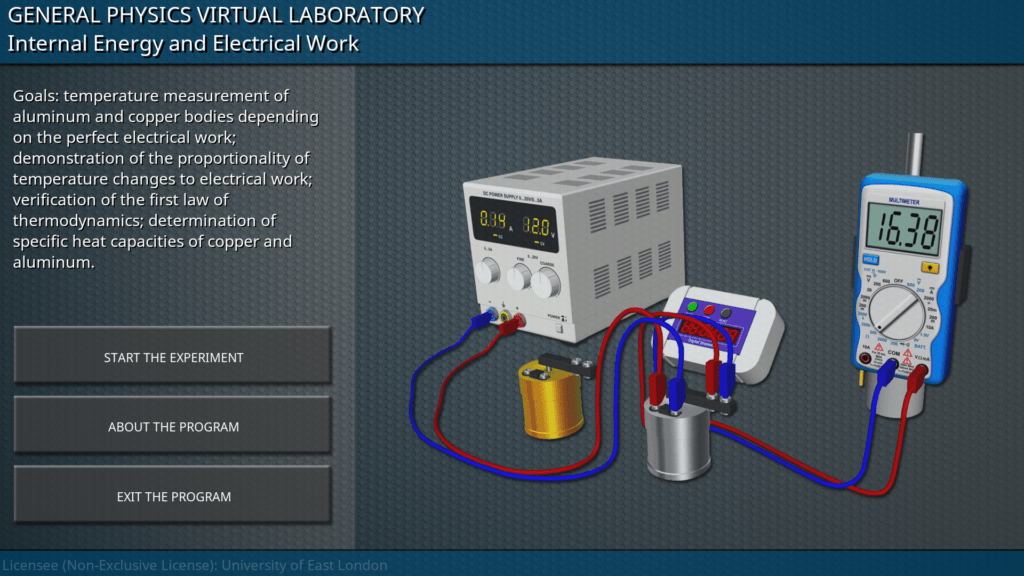

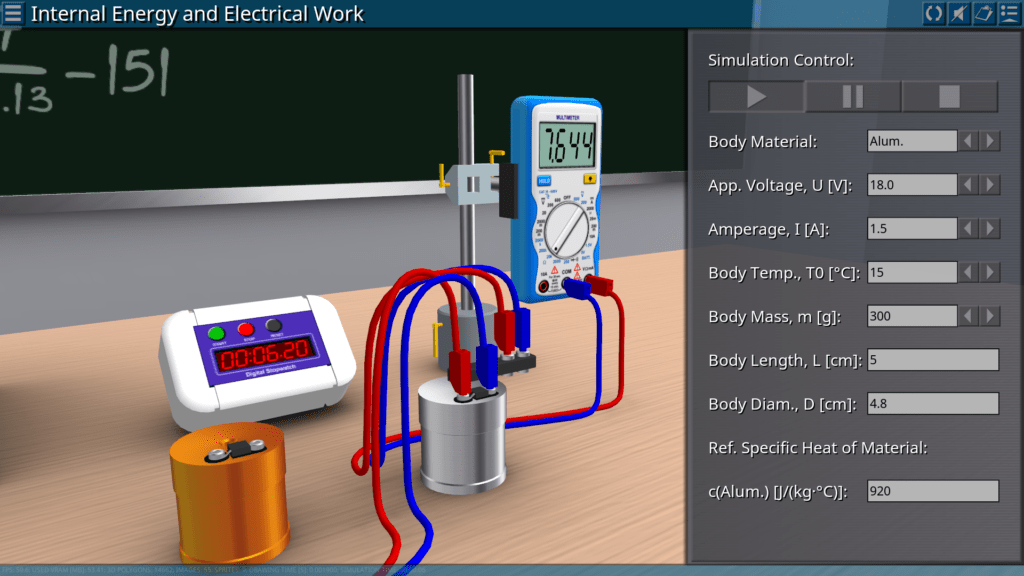
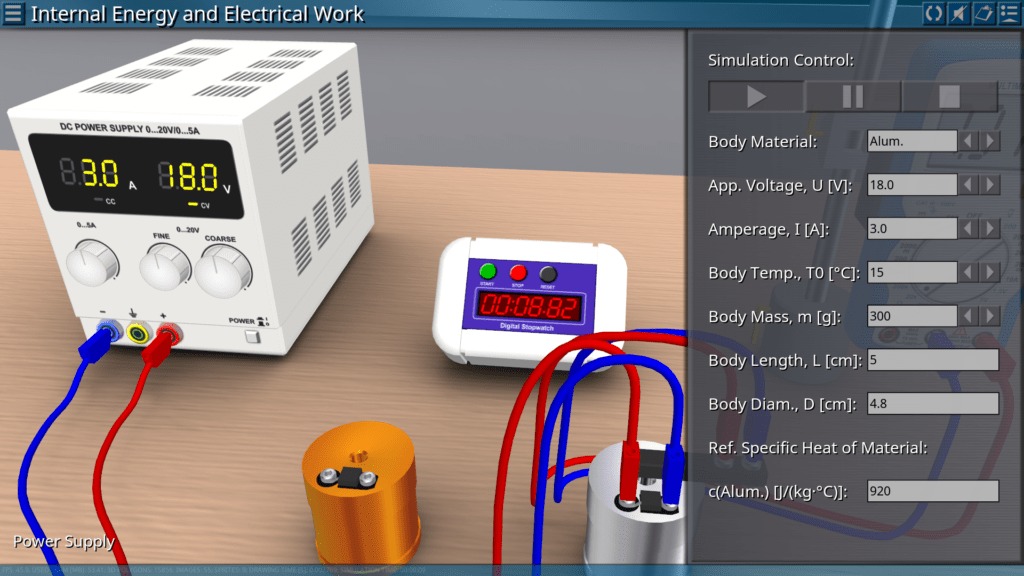
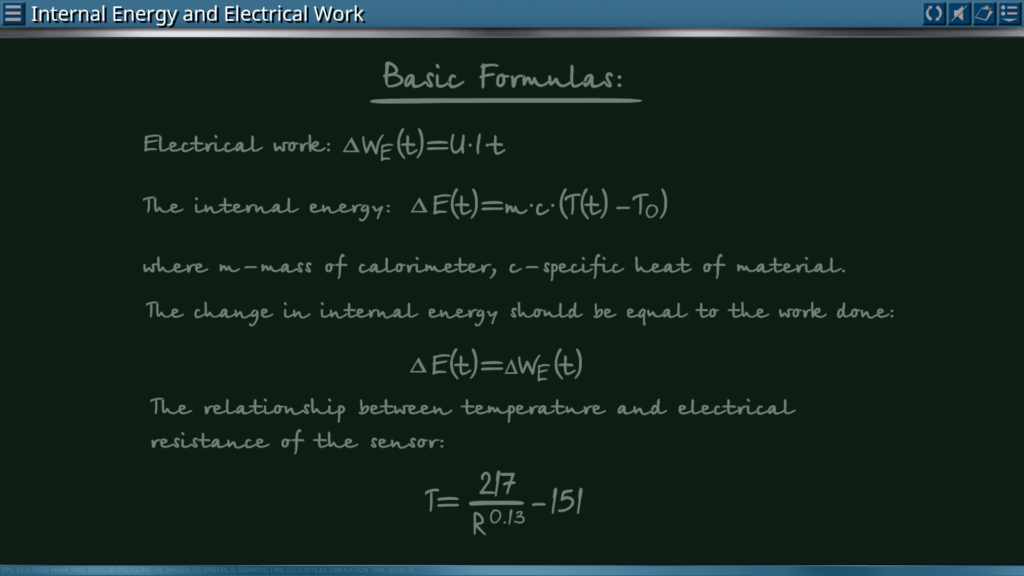

Goals: measurement of closed air pressure at constant temperature for different piston positions and different amounts of air; display of measured values in the form of a p-V diagram; verification of Boyle’s law.
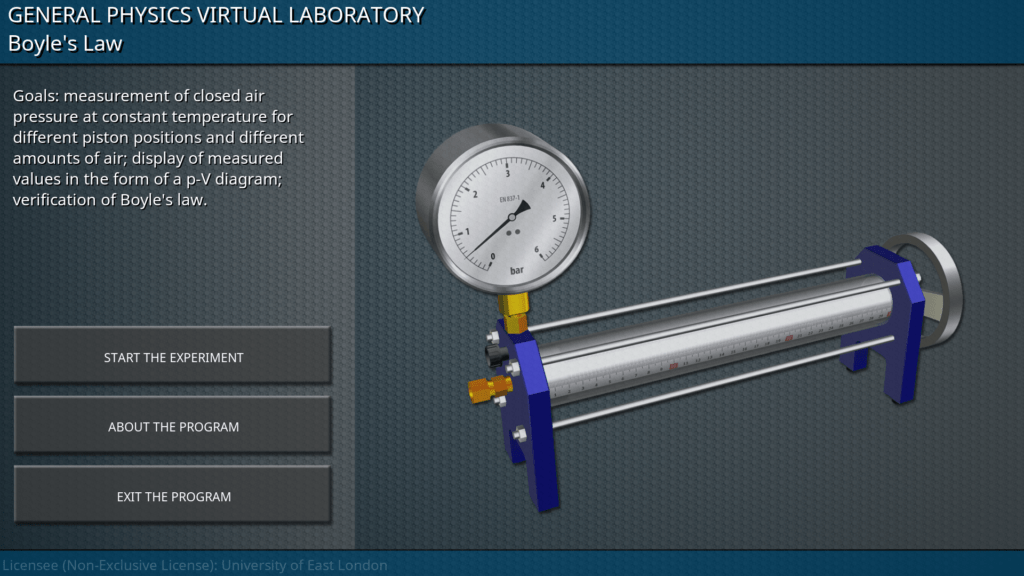
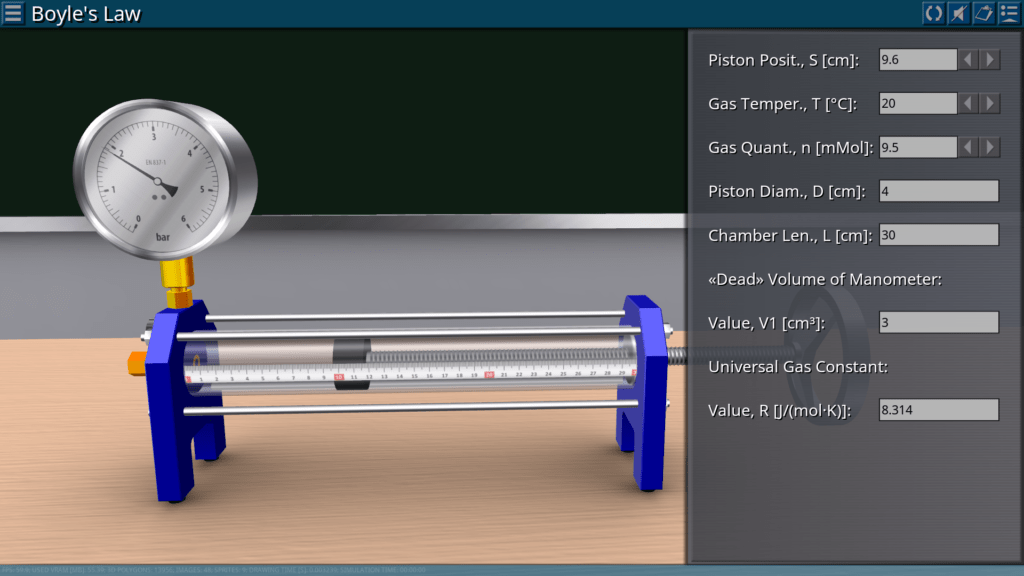
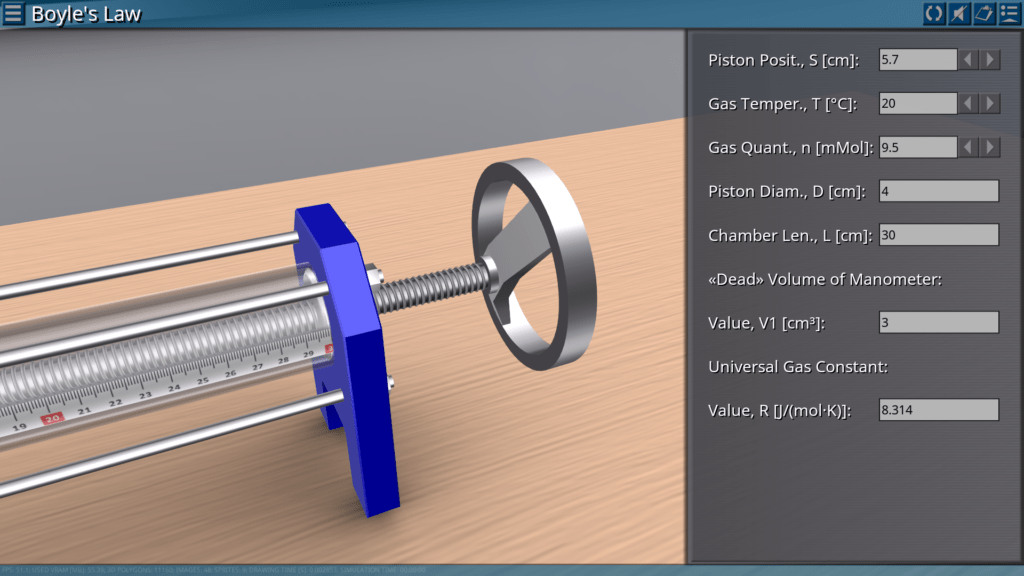


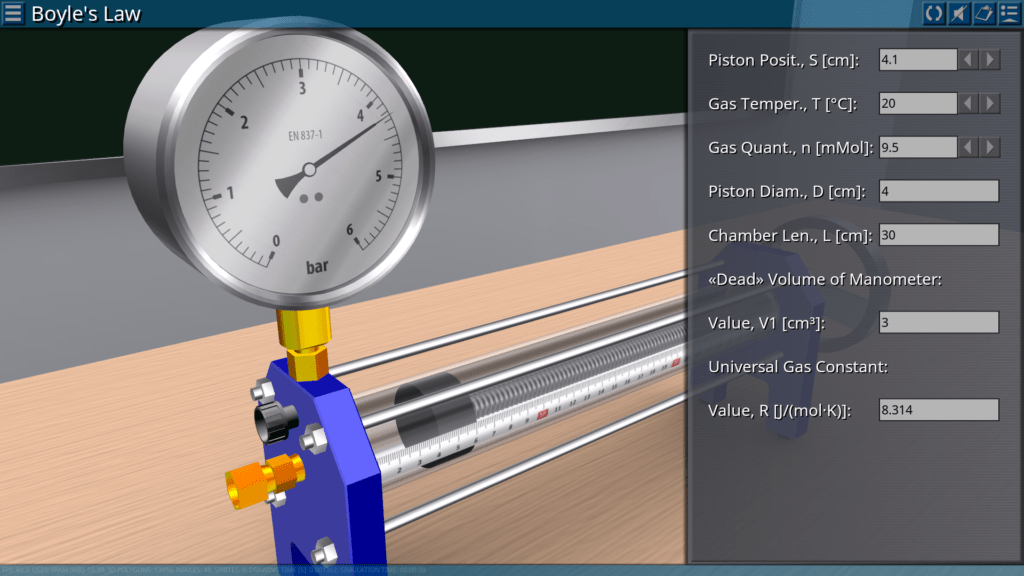
Goals: measurement of closed air pressure depending on temperature; plotting the measured values on the p-T diagram; verification of Amonton’s law.
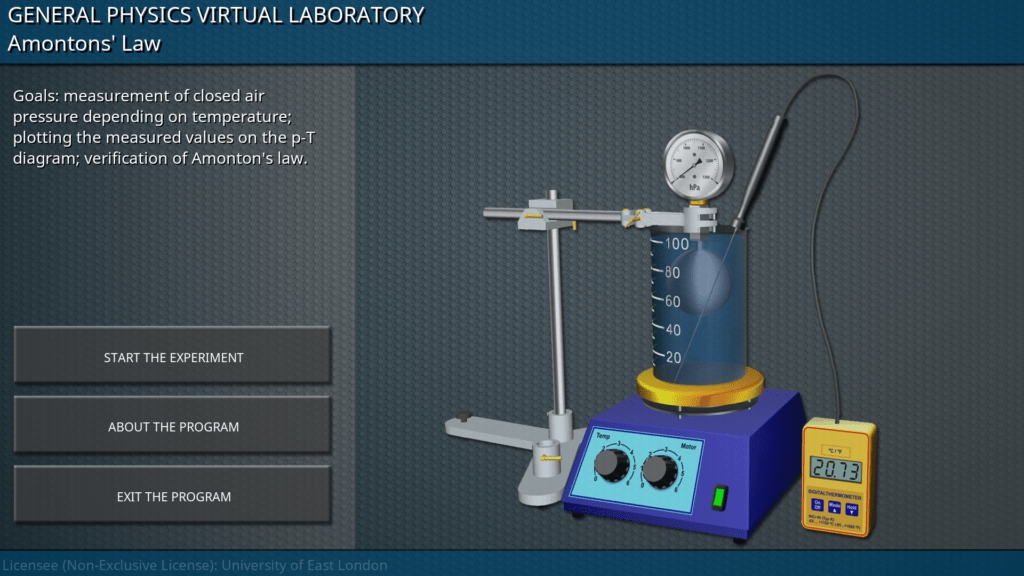
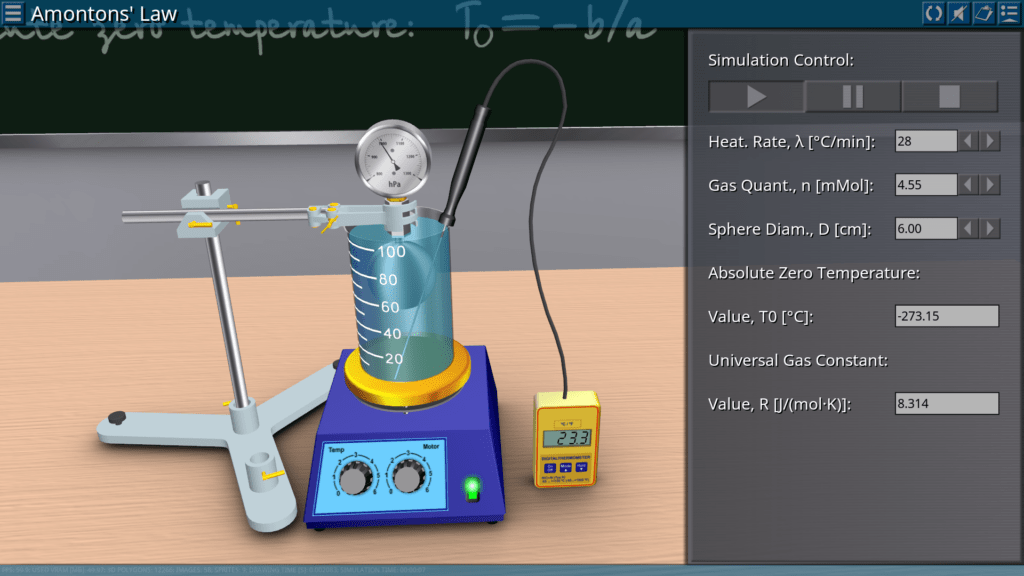

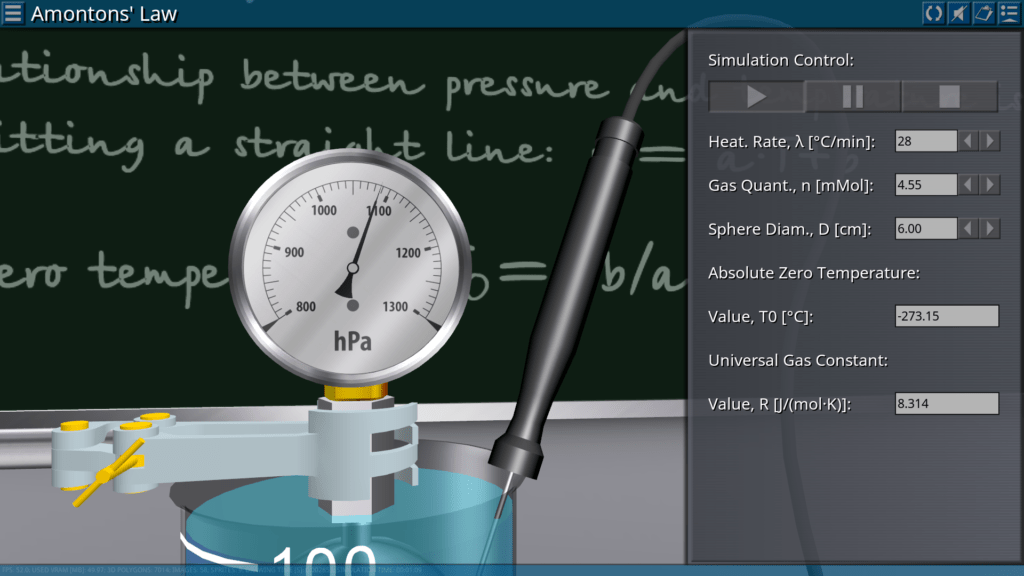

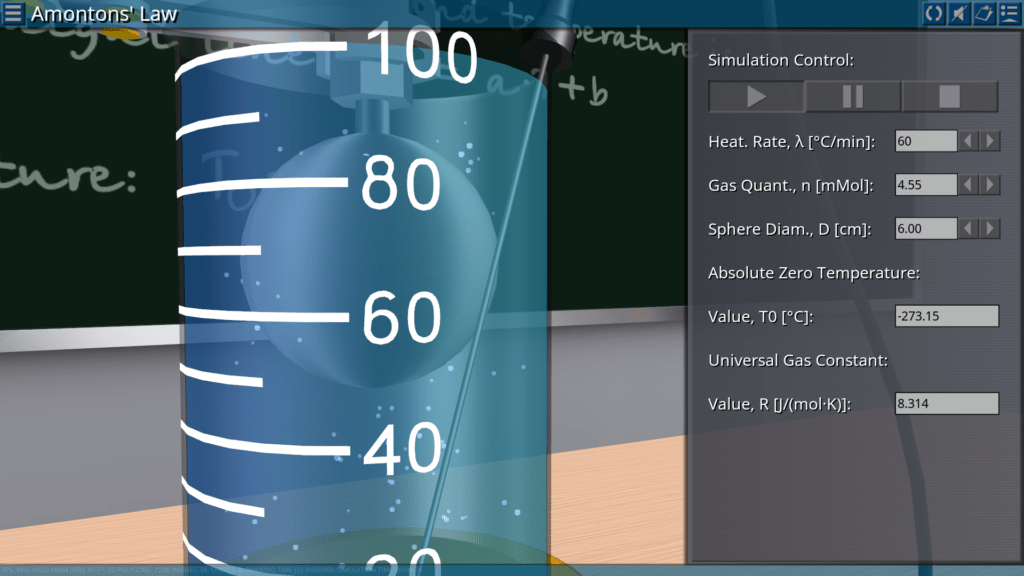
Goals: measuring the oscillation period of the aluminum piston; determination of the equilibrium pressure in a closed volume of air; determination of the air adiabatic index and comparison of the result with the value indicated in the literature.
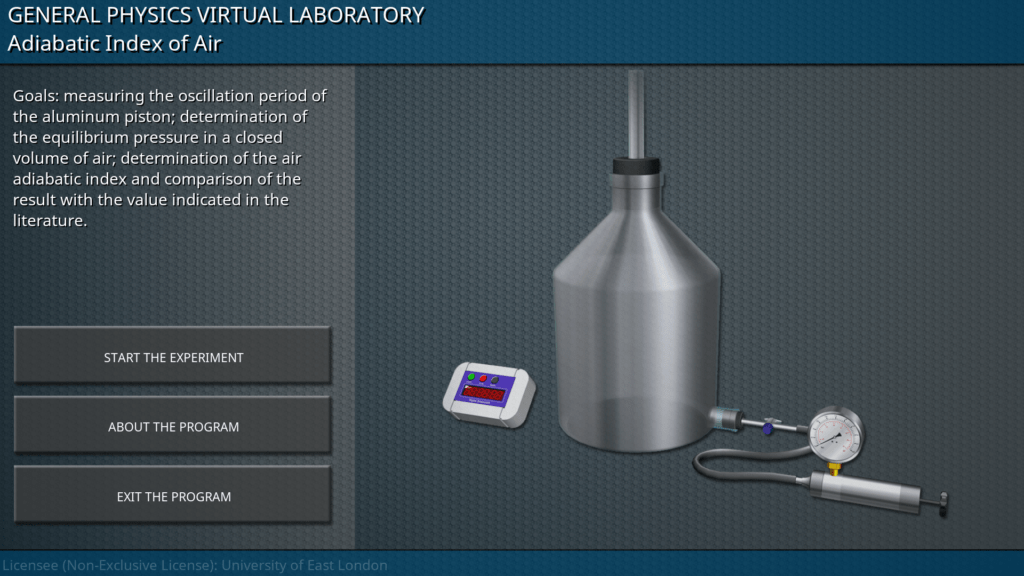


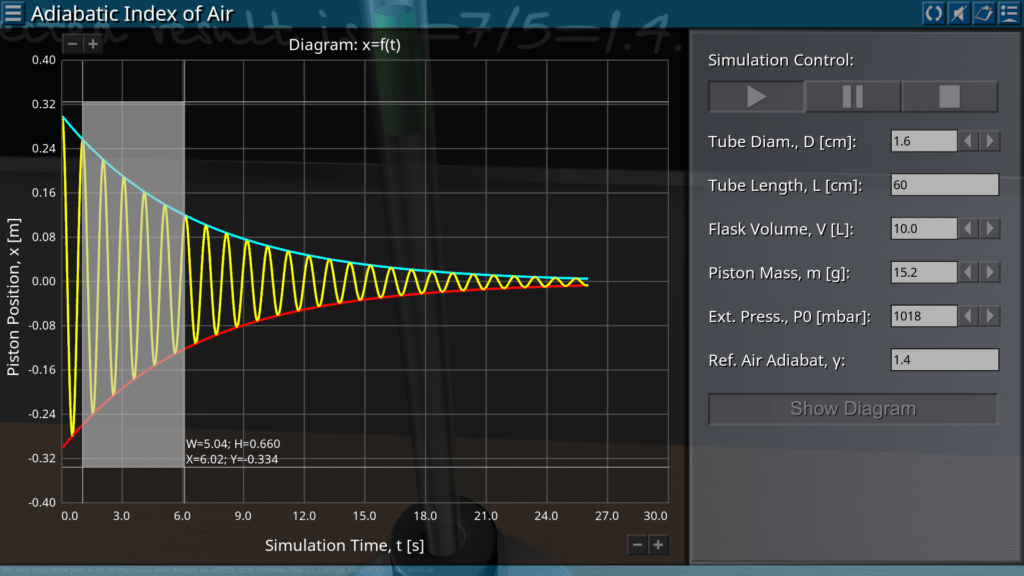
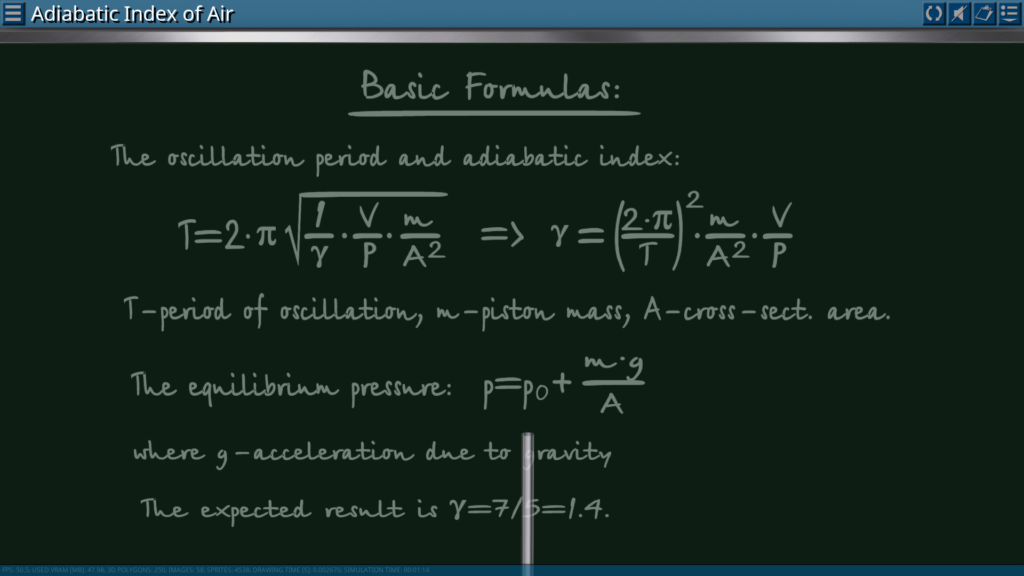
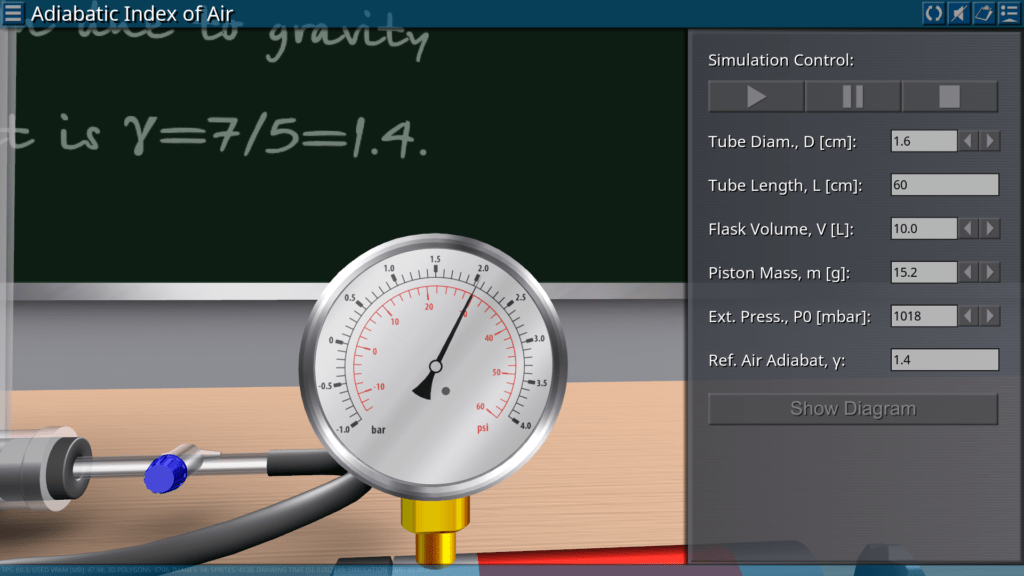
Goals: observation of sulphur hexafluoride in both liquid and gaseous states; plotting isotherms in the form of a p-V diagram; determination of the critical point.
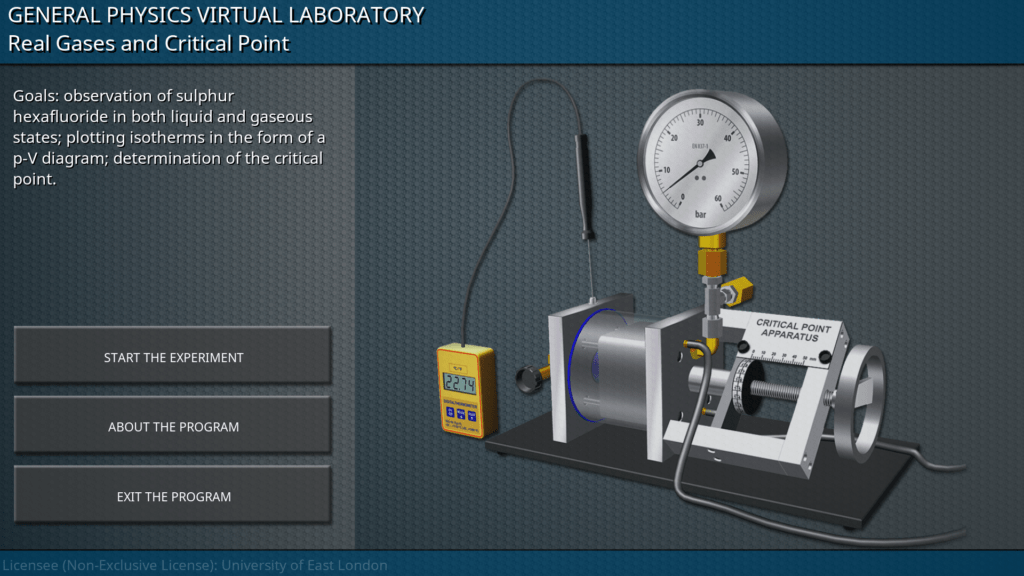

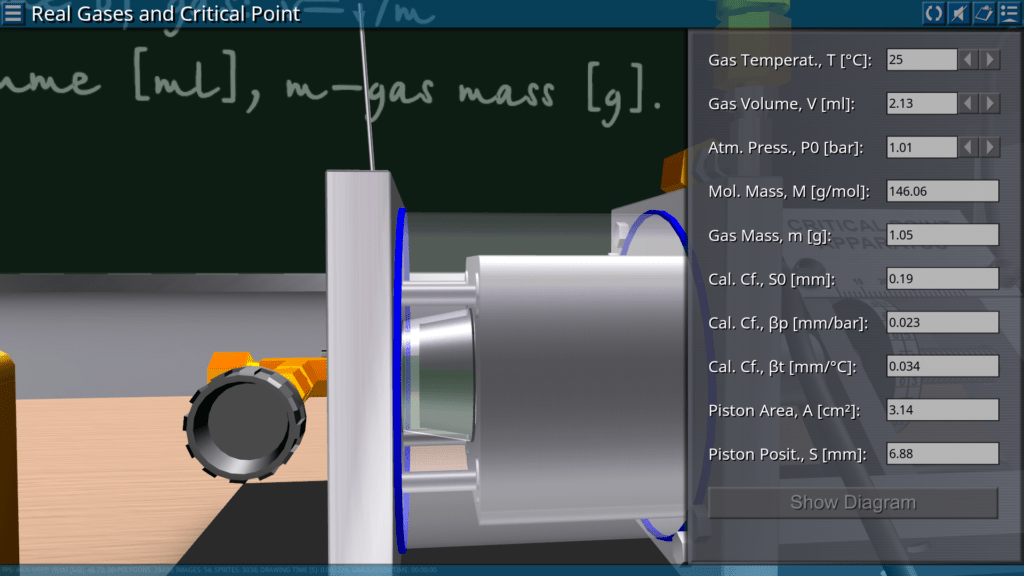
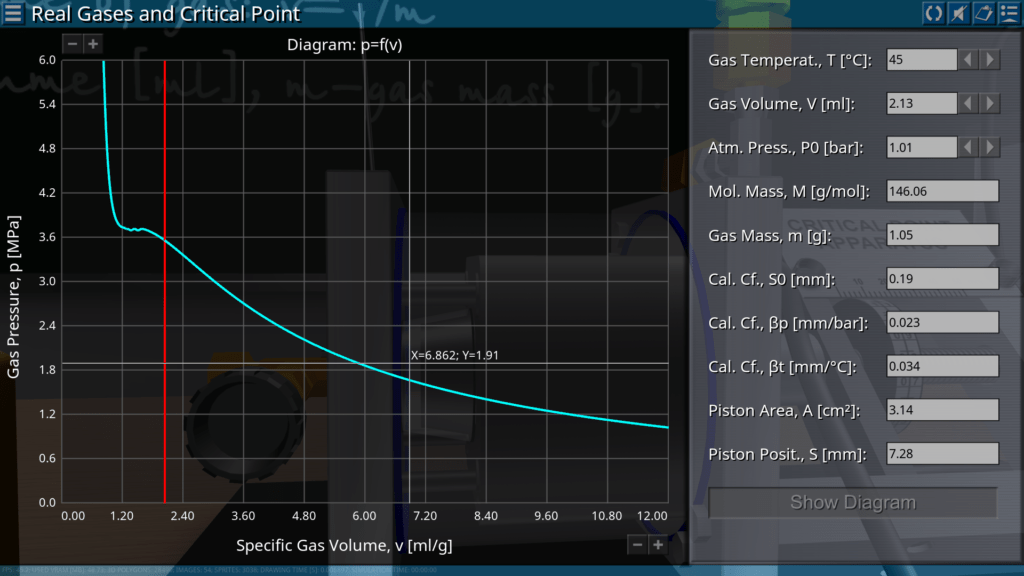
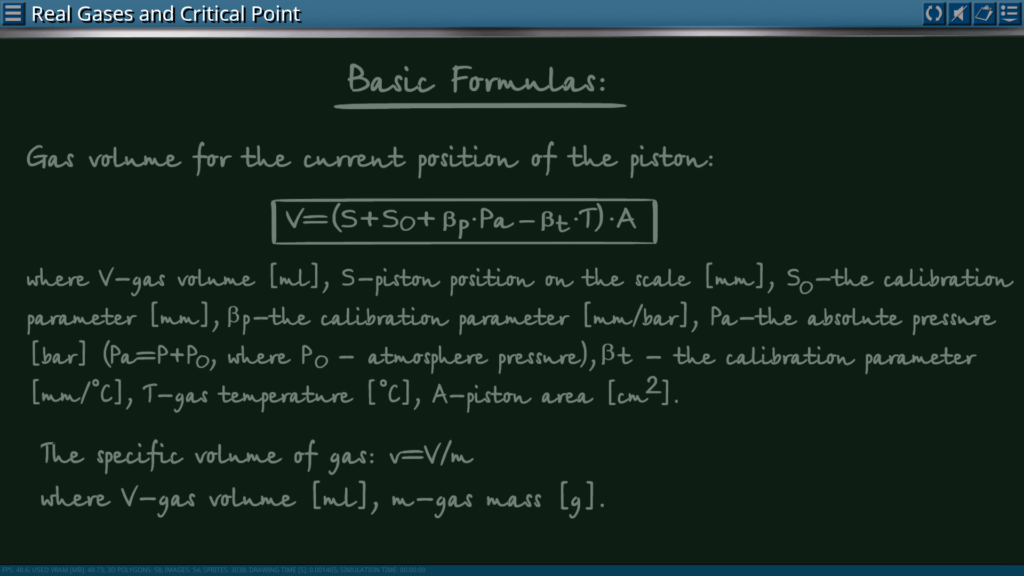
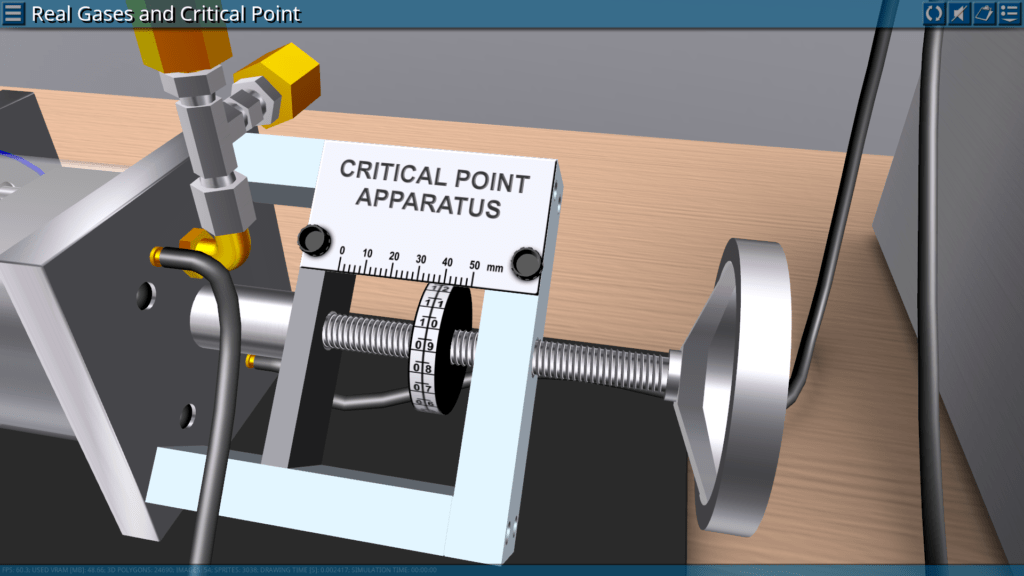
Goals: determination of radiation from Leslie cube using a Moll thermopile; measuring the intensity of heat emitted by four different surfaces in relation to each other, depending on the temperature; confirmation that the radiation intensity is proportional to the temperature to the fourth power.
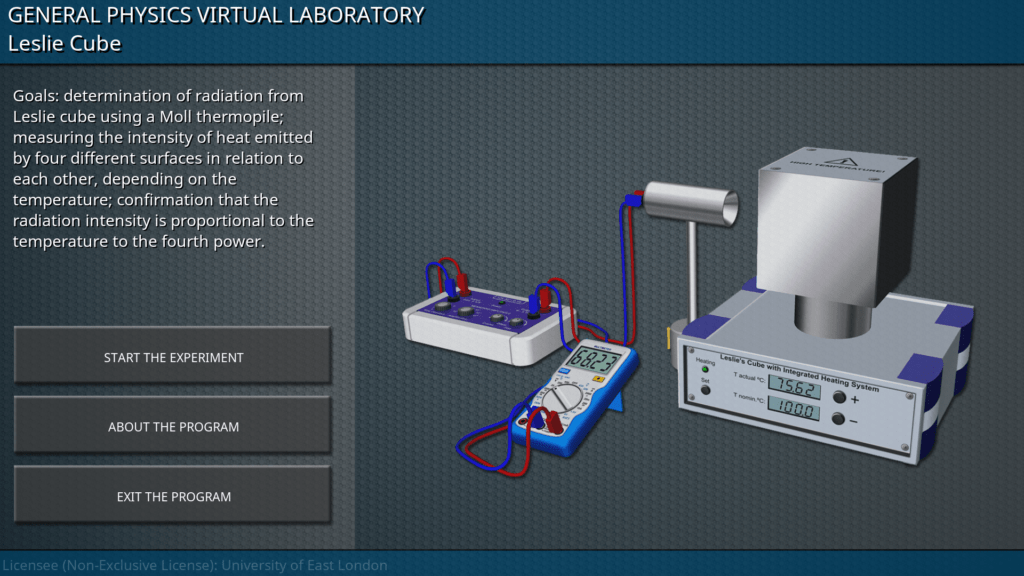
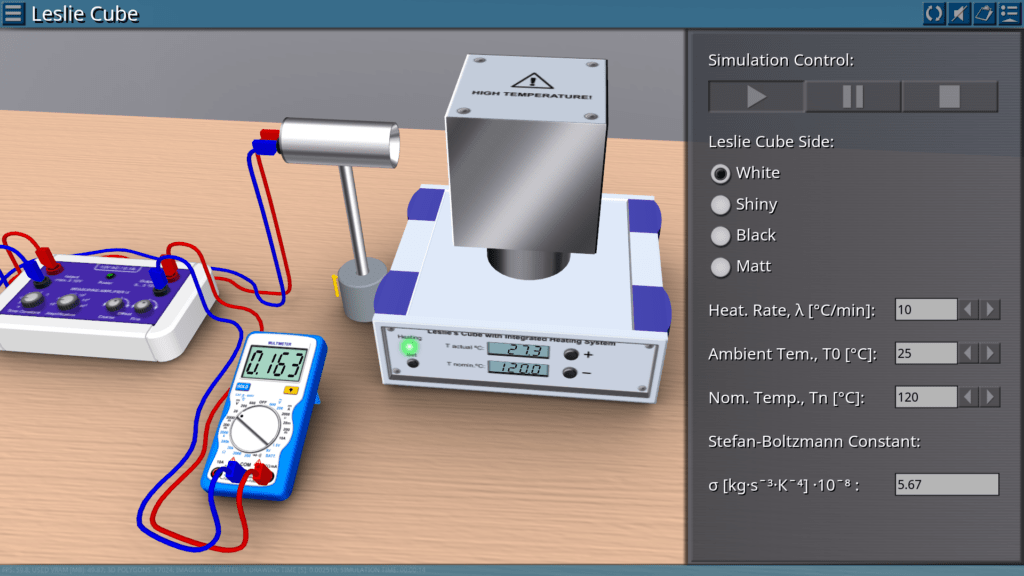

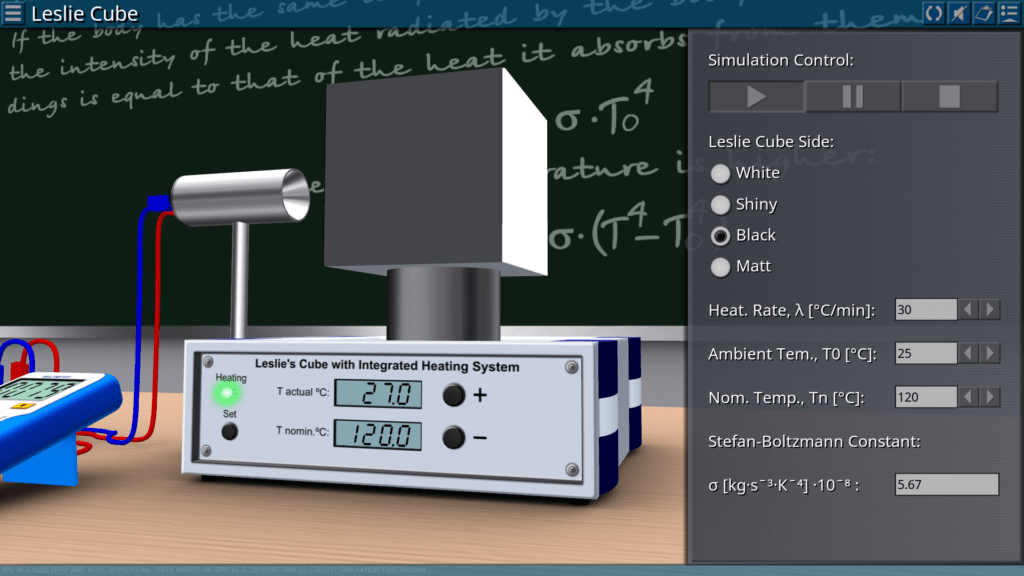

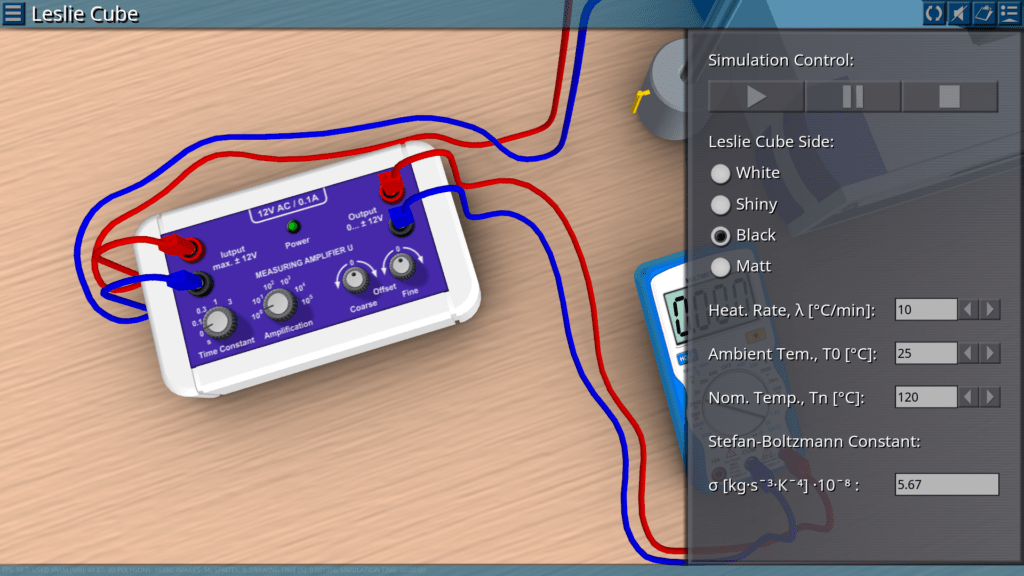
Goals: determining the change in temperature over time along the length of a metal rod, which heats up on one side, but remains cold on the other, both in a dynamic and in a stationary state; determination of the heat flow value; determination of the thermal conductivity of the material from which the rod is made.
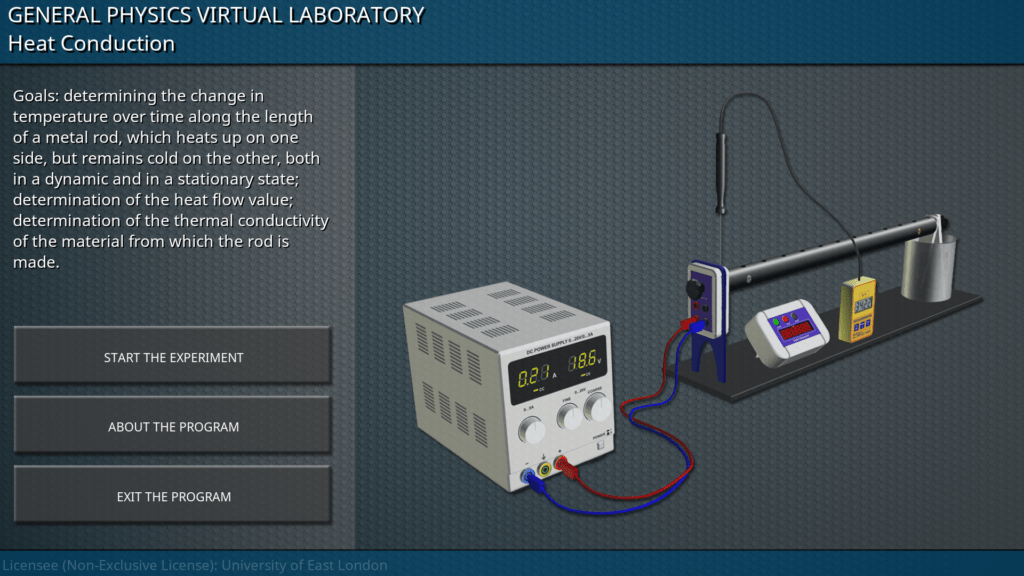
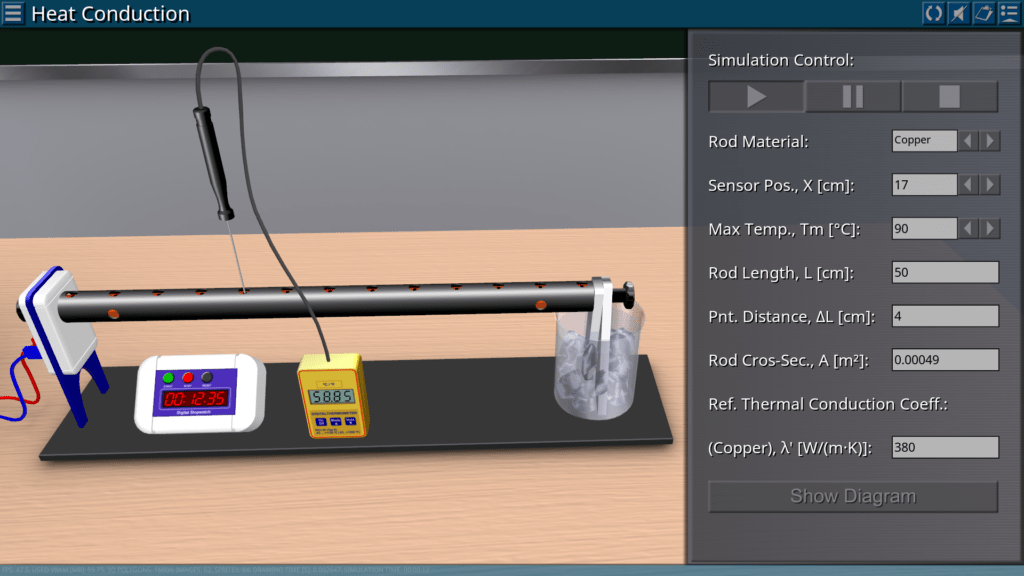
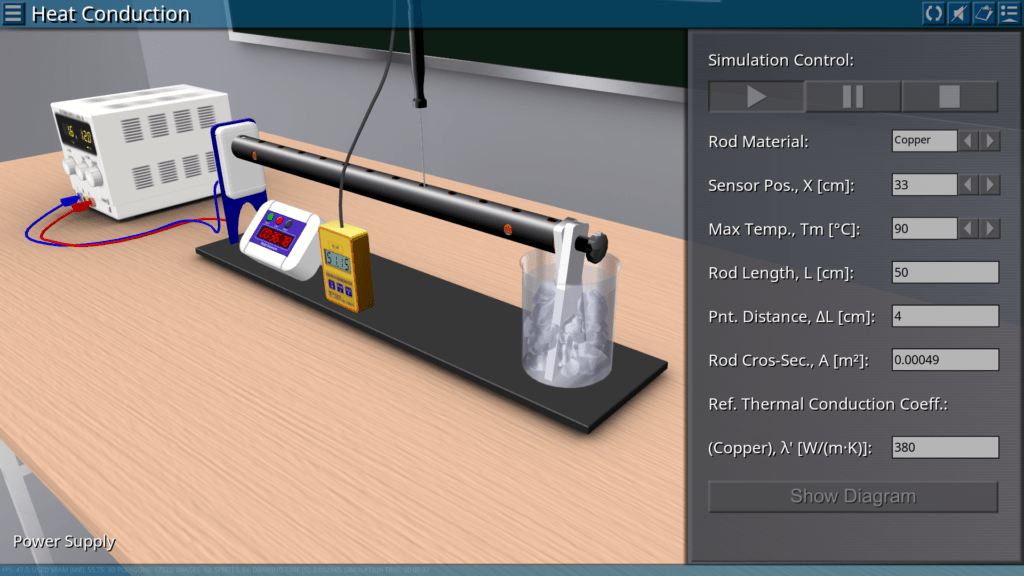
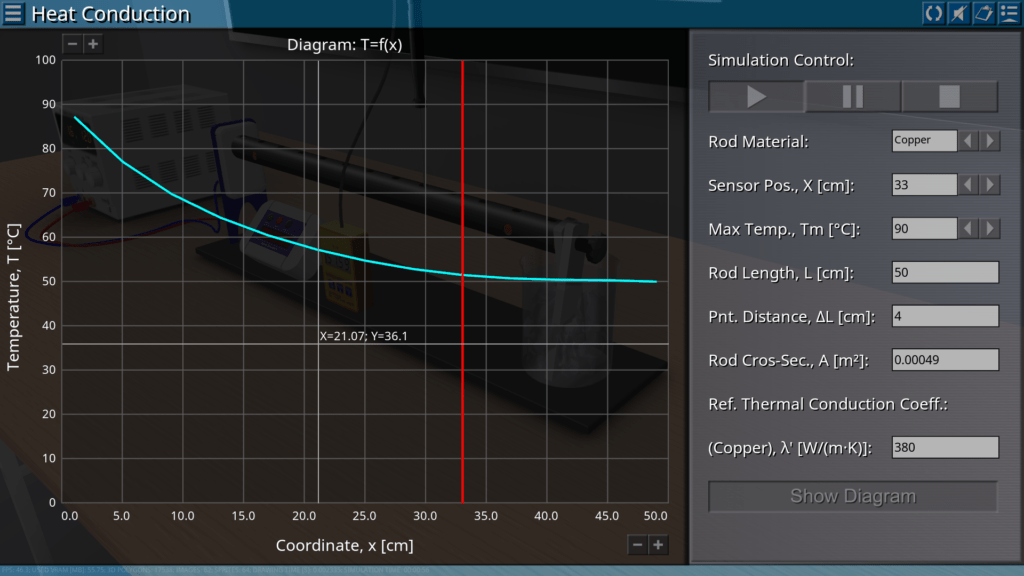

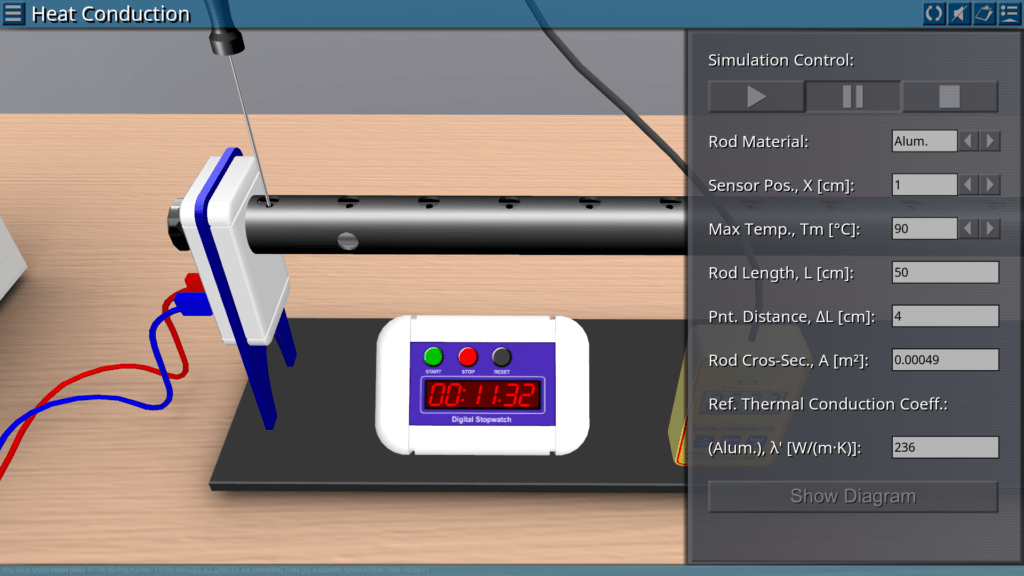
Goals: measurement of thermal expansion along the length for tubes made of various materials; determination of the coefficients of linear expansion for the materials under study and their comparison with the values indicated in the literature.
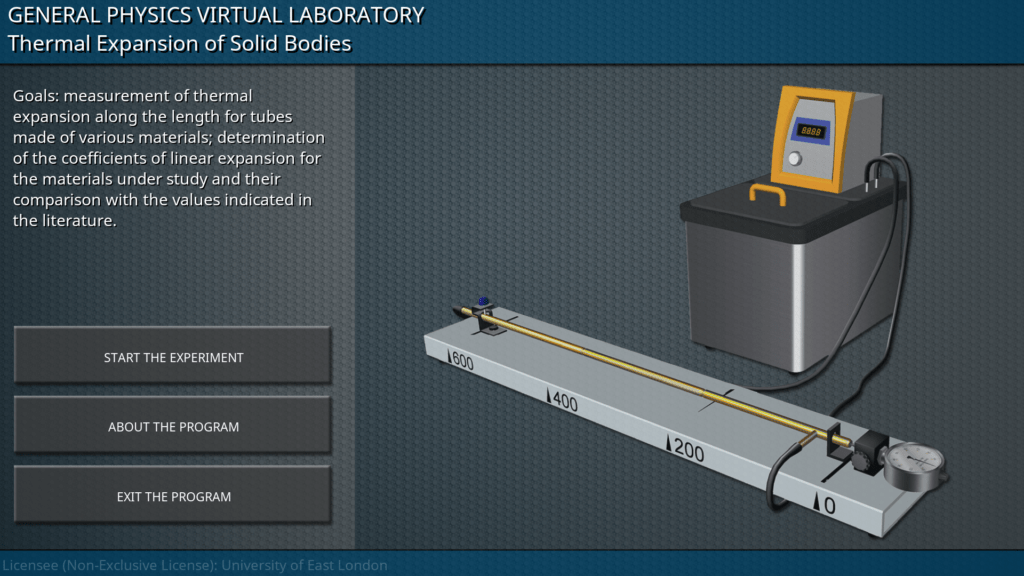
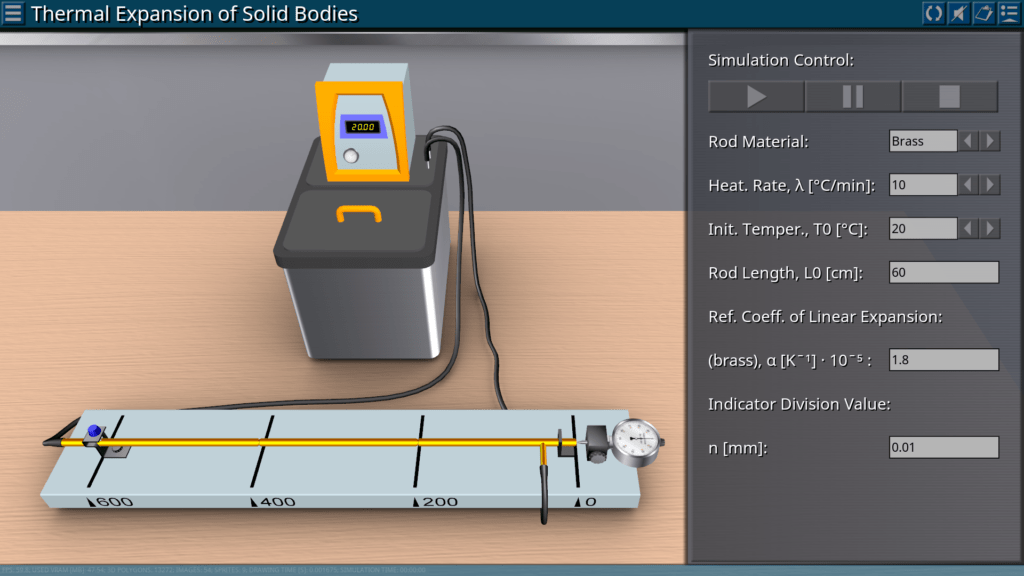
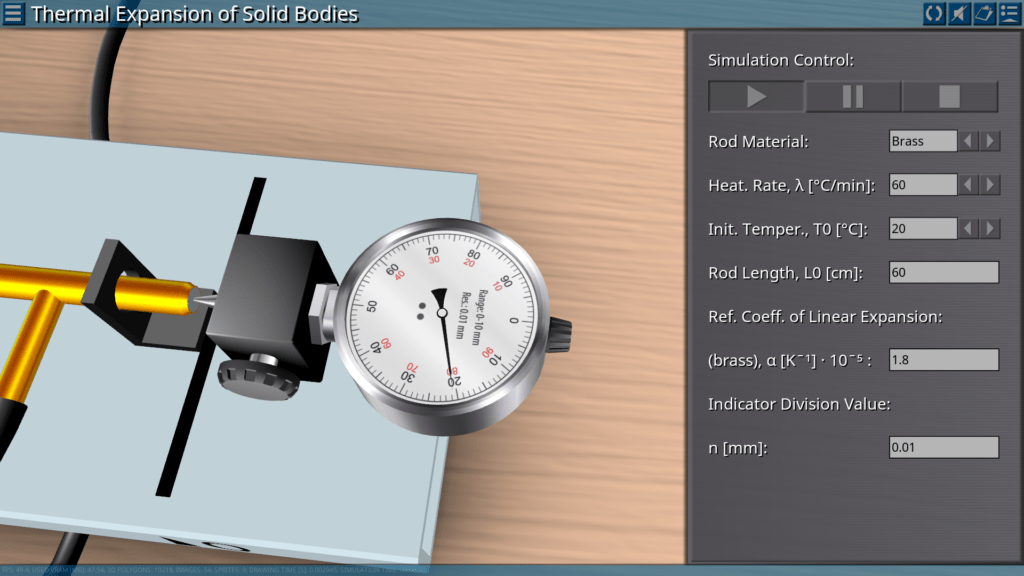

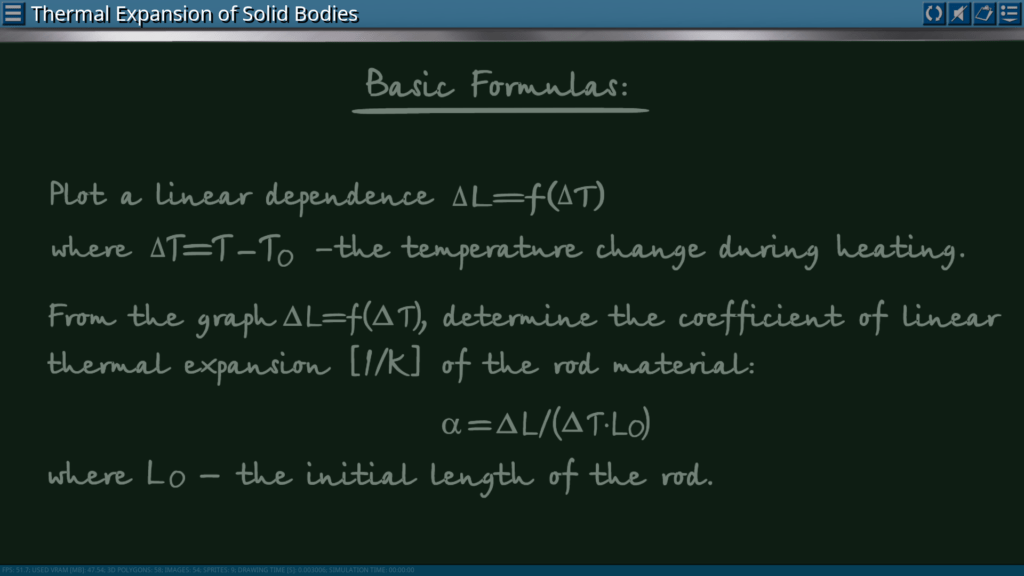

Goals: measurement of thermal expansion of water in the temperature range from 0 to 15 °C; demonstration of thermal anomaly; determination of temperature at the maximum density of water.

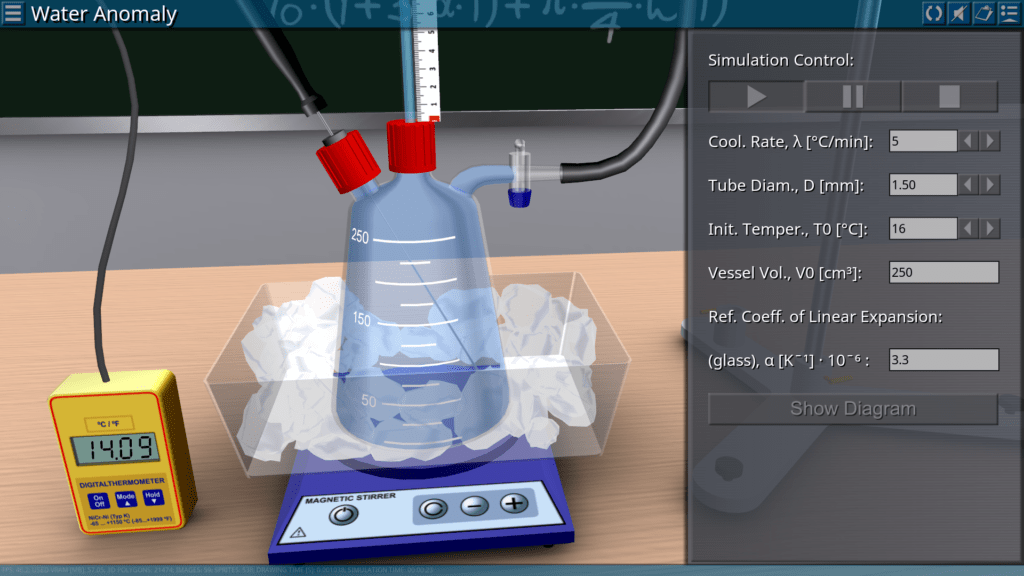
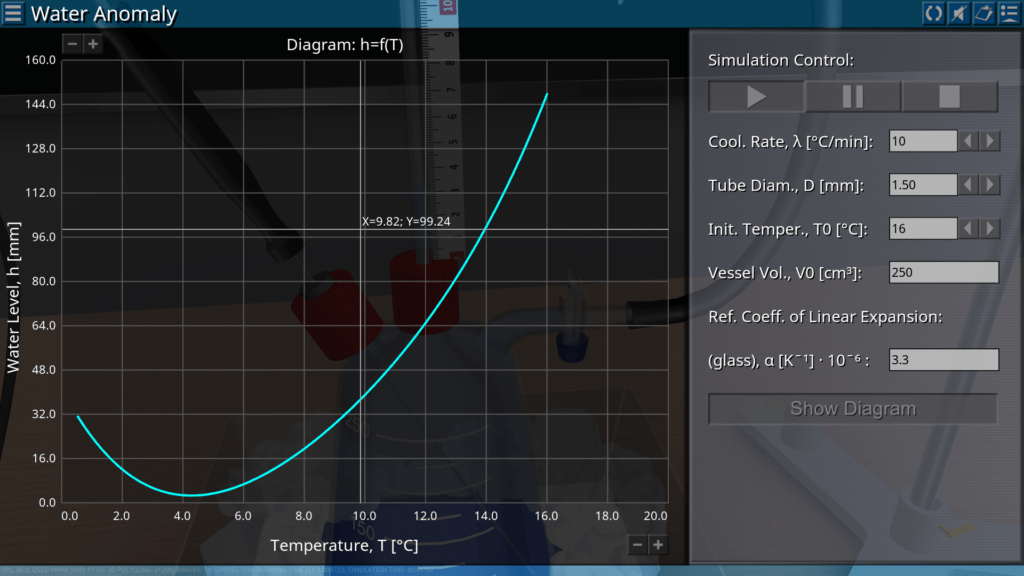
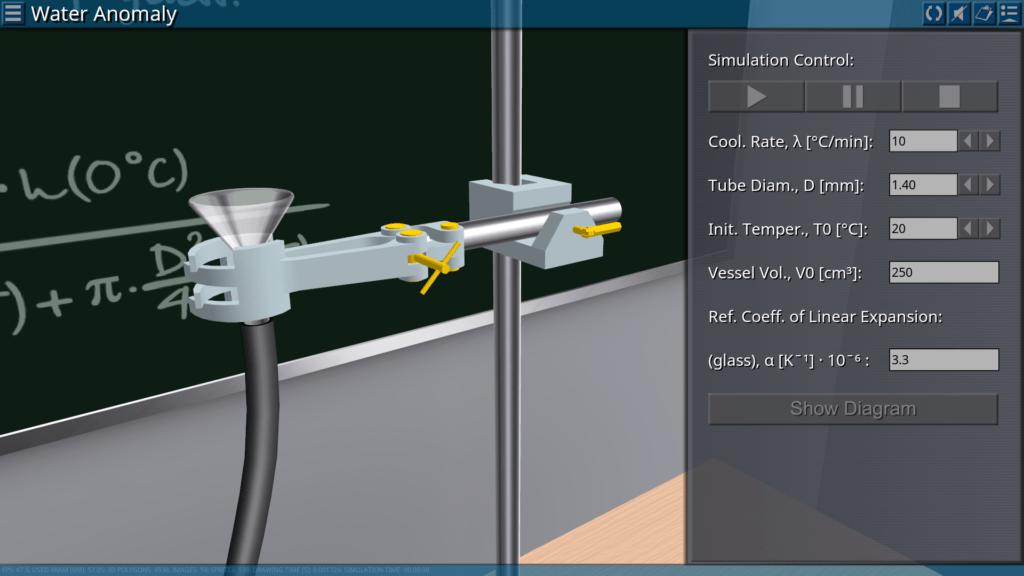
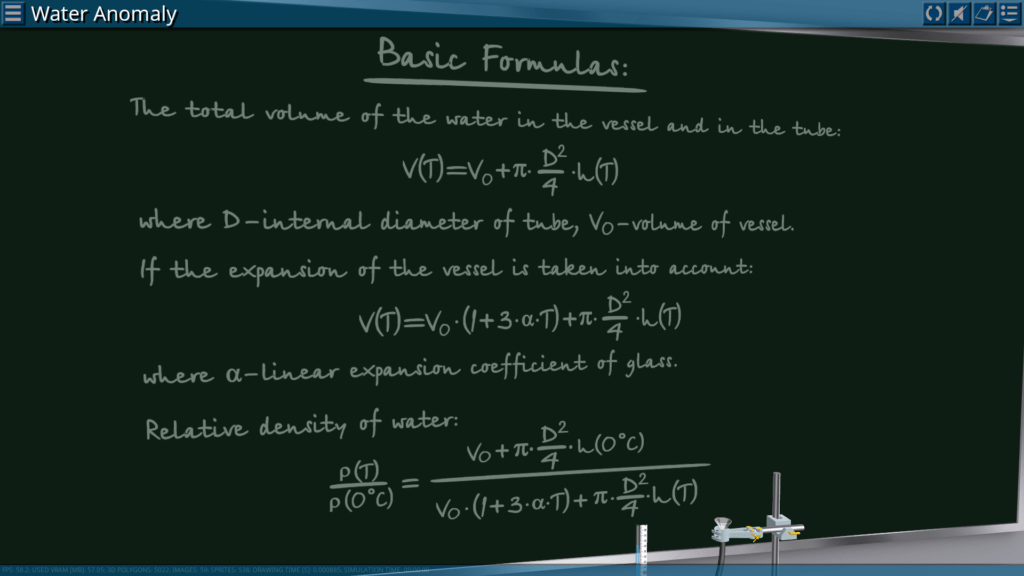
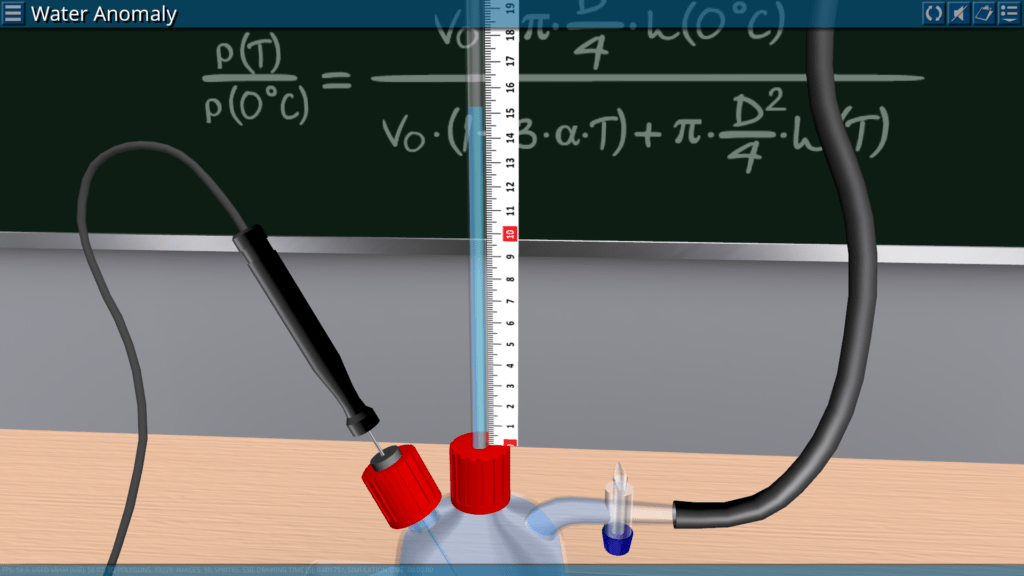
Goals: study of the principle of operation of the Stirling engine as a heat engine; measurement of no-load speed depending on thermal power.

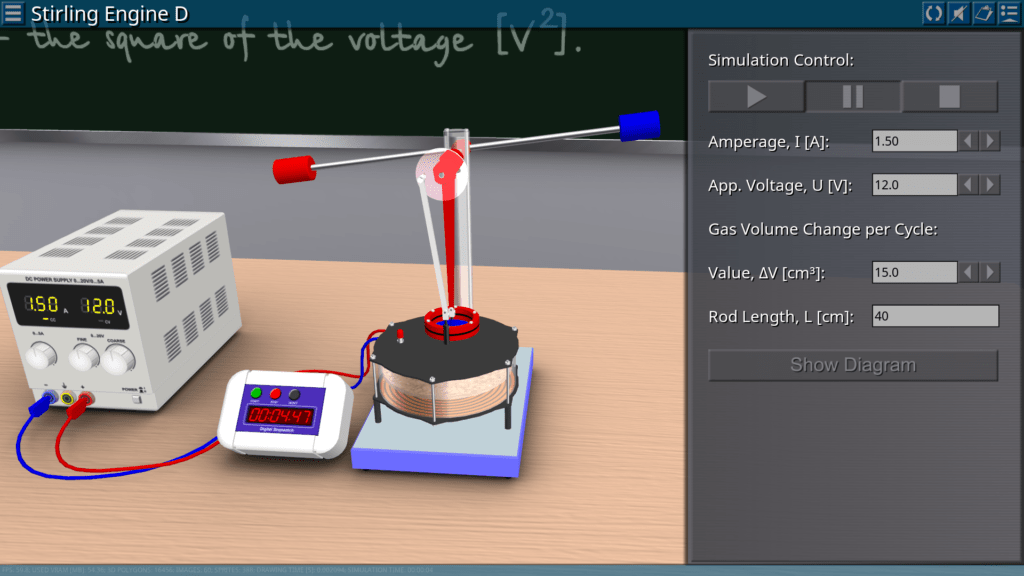
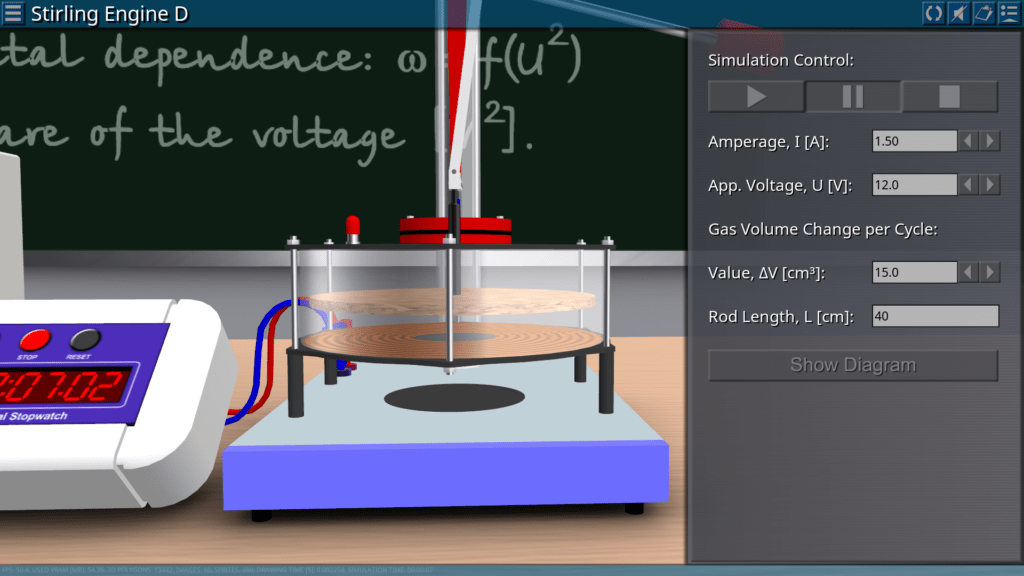


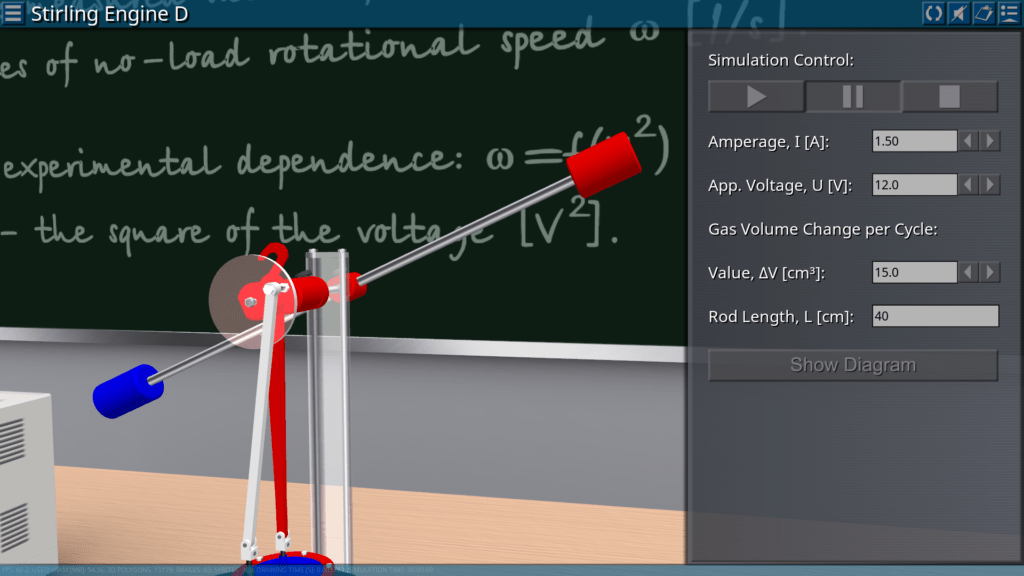
Goals: study of the principle of operation of a gamma-type Stirling engine; demonstration of the heat engine operation in various modes; plotting p-V diagram of the engine cycle; determination of mechanical power associated with a full cycle.


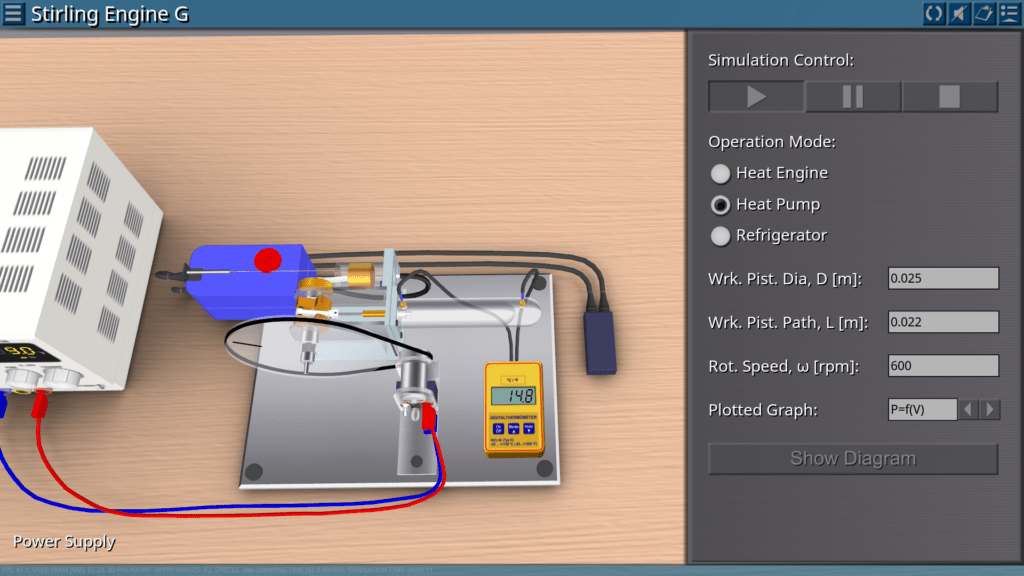
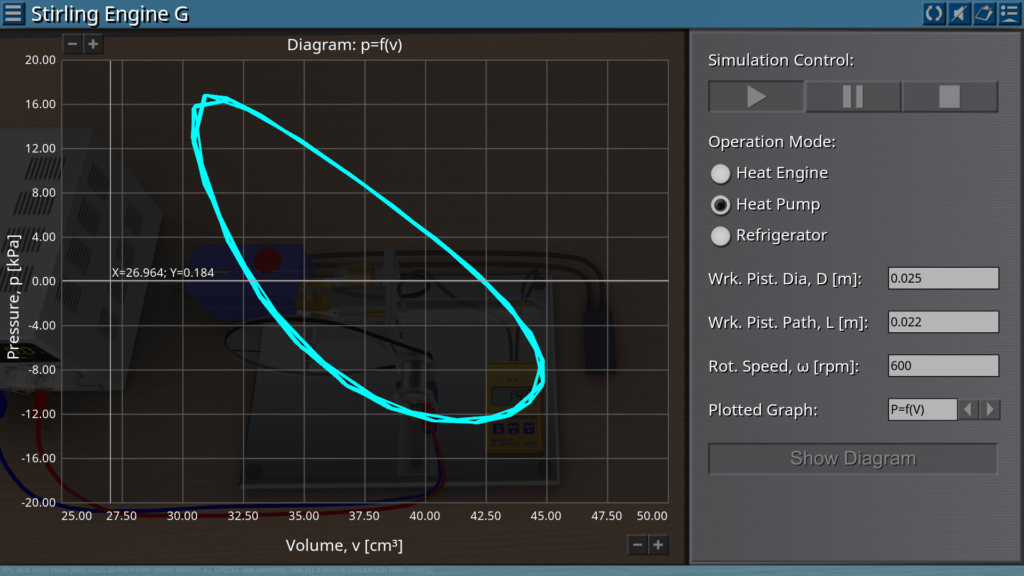
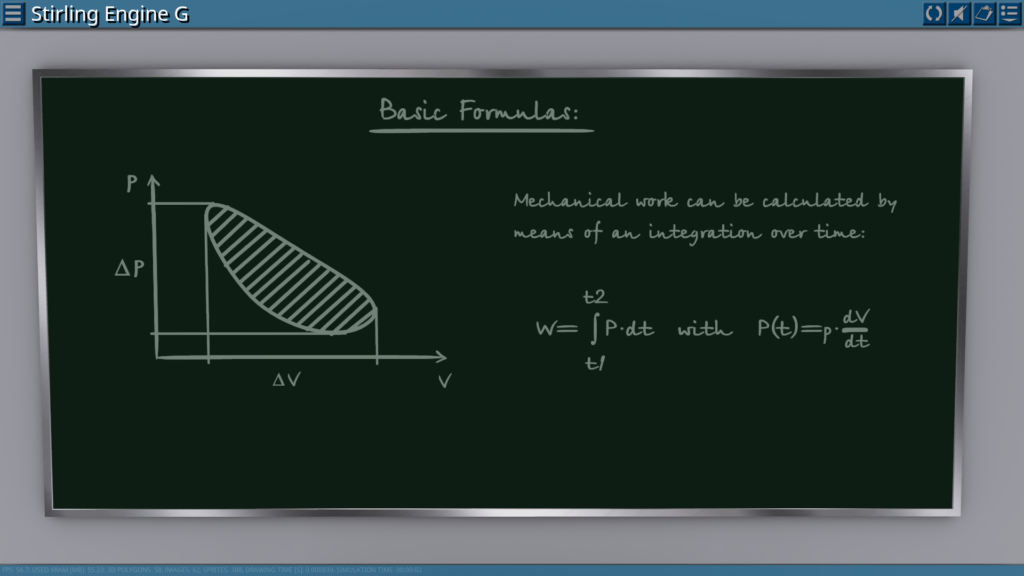

Goals: demonstration of the operation of an electric compression heat pump; quantitative assessment of the ongoing cyclic process; construction of empirical dependences of temperature, pressure and electrical power.
